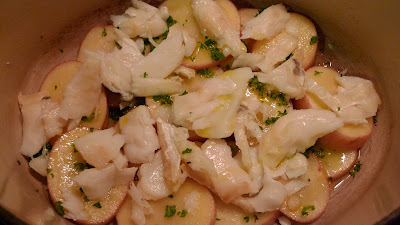“Whoever says “truffles” utters a great word which arouses erotic and gastronomic memories among the skirted sex, and memories gastronomic and erotic among the bearded sex."Well %$#@ me silly and call me a mushroom, but Brillat-Savarin was on to something here (said the author as a beardy member of the bearded sex).
"This ... is due to the fact that the noble tuber is not only considered delicious to the taste, but is also believed to foster powers the exercise of which is extremely pleasurable.”My word, is it hot in here? Anyway, last weekend we tested the power of these noble tubers at the 2010 Truffle Degustation lunch at Chateau Yering in the Yarra Valley. Chateau Yering's restaurant is a long, formal room with windows on all sides overlooking the Valley, and was a perfect setting for a grossly extravagant lunch. It was made even perfect-er because wines were provided by Domain Chandon, Moet and Chandon's southern offshoot.
The first real course was an Amuse Bouche (which is a French expression for "one who finds the Mighty Boosh amusing, but not particularly laugh-out-loud funny") of a Parmesan panne cotta with a noodle of truffle jelly. At the first spoon the warm, rich, underground scent of truffles was bursting out, and the panne cotta was creamy and resplendent with fat. Fantastic, and it went down a treat with the Chandon Brut 2006.
“It is safe to say that at the time of writing (1825), the fame of the truffle is at its zenith. Nobody dares admit to having been present at a meal which did not include a single truffled dish. However good in itself an entrée may be, it makes a poor show if it is not garnished with truffles."Our entree met this criteria handsomely - it was a Persian feta cigar, made of brik pastry and filled with Yarra Valley Dairy feta and served with a salad of shaved beetroot and truffles. The cigar was lovely but not particularly worthy of words, but the salad was a crisp disappointment. Both the beetroot and truffles had a nice enough crunch but not a lot of flavour. Shame, but the benchmark had already been set pretty high. This came with a Chandon Brut Rose 2006.
Having been brought a little way back to Earth, we were quickly elevated again with the next course - a potato and truffle ravioli with salsify, wild mushrooms and a nasturtium coulis. A single ravioli, stacked up and filled with potato foam had the potential to be a ball of fluff and nothing, but was soft, unctous and bursting with the magic scent of our deep-down friends, both tuberous and fungal. The pasta was, of course, perfect and its gay, verdant sauce was just verging on the underwhelming. Otherwise, wow.
And now onto the almost main course - squab roasted in liquorice, with a parsnip puree, truffle bread and butter pudding and violet emulsion. Let's dispense with the violet emulsion - it was an intensely floral foam, and in decades previous would have been used for washing your gran's hair. Nevermind - everything else was slightly magical. The squab was tender and the spicing was perfect, and the small cubes of bread and butter pudding were crisp on the edges and soft within. I could have eaten a pile of these. This came with a 2008 Chandon Pinot Noir.
Finally, the dish I'd been waiting for - a charcoal grilled wagyu beef fillet with a white onion puree, bone marrow jus and a Jerusalem artichoke gallette. This was the ultimate winter dish - beautifully coloured and browned winter root vegetables with a piece of perfect, tender pink beef with a thin sheen of charcoal to get the bitterness *just* right. The beef was beyond belief and the vegetables were heart-warmingly generous. This was a perfect way to finish the real (ie non-sugar) part of the meal, and although not strong in truffles, it neither needed them or would have been improved by them. Served with gusto and a glass of the same (or at least a 2006 Domain Chandon Barrel Selection Yarra Valley Shiraz).
Dessert was a Banana and Truffle Semifreddo. It was, quite frankly, beyond amazing. The truffles really worked well with the earthyness of the banana and the whole effect was lush and sensual. It was also wrapped in a cute ribbon of firm maple jelly, which failed to give it a "Hello Kitty" effect and so can be forgiven.
Brillat-Savarin tells the tale of a woman “who is witty but unpretentious, virtuous but no prude, and for whom love is now only a pleasant memory.” In the story, the woman dines with her husband and his friend, described as “harmless”. The husband is called away, and after a truffle-fuelled meal, the friend metamorphoses from complimentary to expansive to affectionate to tender to importunate. Ever after she ate truffles with a sense of deep mistrust.
I know what you're thinking, but I'm far too much of a gentleman to say. Nor will I be photographed making gestures. To change the subject quickly, I''l leave the final words to Brillat-Savarin, who clearly thought of himself as a voice of authority:
“It only remains for us to discover whether the truffle is indigestible. Our answer will be in the negative. This official and final decision …”No, I didn't think so either, but I'm not sure I can sound so definitive. Or official.






























